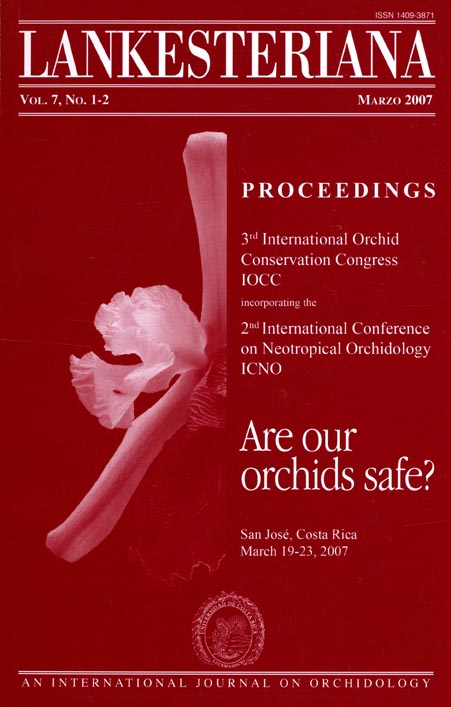Understanding the distribution of three species of epiphytic orchids in temperate Australian rainforest by investigation of their host and fungal associates
DOI:
https://doi.org/10.15517/lank.v7i1-2.18389Abstract
Understanding the environmental constraints that affect species distributions are critical to the mainte- nance of biodiversity. The abundance of epiphytic organisms, those that grow on another substrate, such as a tree or rock, is a direct consequence of the avail- ability and distribution of these substrates (Ackerman et al. 1989). In the case of epiphytic orchids it is also due to the presence of orchid mycorrhizal fungi (OMF). For an orchid, crucial to its germination and establishment, is its association with an OMF. The OMF provides a carbon source to the developing orchid embryo (Rasmussen 1995). Although recipro- cal carbon transfer has been demonstrated in mature plants of a green, terrestrial, orchid species, Goodyera repens (Cameron et al. 2006), it is generally believed that OMF receive no immediate benefit from their association with orchids. Therefore, it would appear intuitive that orchids would associate with all OMF available within their local environment and that they would actively seek this association.
Downloads
Downloads
Published
How to Cite
Issue
Section
License
According to the Open Access policy promoted by the University of Costa Rica, all the papers published by Lankesteriana are licensed under the Creative Commons copyright and can be downloaded free of charge. The journal holds copyright and publishing rights under the CC BY-NC-ND 3.0 CR license.
Before the publication of the materials submitted by the author(s) in LANKESTERIANA, the author(s) hereby assign all rights in the article to the Lankester Botanical Garden.





